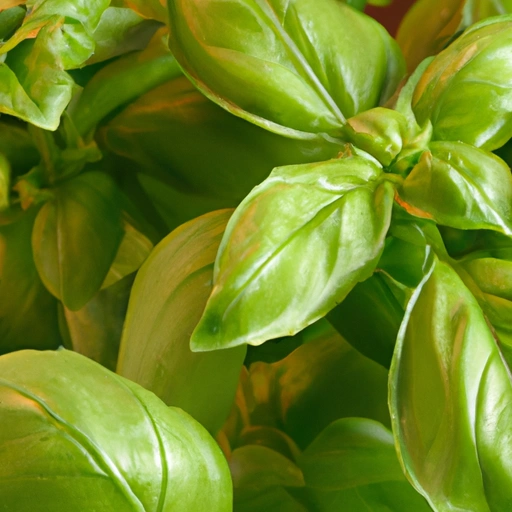Basil
Description

Basil, also known as Ocimum basilicum, is a fragrant herb native to tropical regions from Central Africa to Southeast Asia. It is a staple in various cuisines around the world, particularly in Italian, Thai, Vietnamese, and Indonesian dishes. The leaves are often pointed, with a vibrant green color and a slightly sweet, peppery flavor that becomes more intense when cooked. Basil is available in several varieties, including sweet basil, Thai basil, and lemon basil, each with its unique flavor profile and culinary uses.
Common uses
Basil is commonly used to flavor soups, sauces, salads, and meat dishes. It's a key ingredient in pesto, a sauce made from basil, pine nuts, Parmesan cheese, garlic, and olive oil. Fresh basil leaves are often added at the end of the cooking process to preserve their delicate flavor and aroma. Dried basil, while less fragrant, can also be used when fresh basil is not available.
Nutritional value
Calories
A 2 tablespoon serving (about 5 grams) of fresh basil provides approximately 1 calorie.
Protein
Basil is low in protein, with a 2 tablespoon serving containing roughly 0.2 grams.
Fat
Basil contains negligible amounts of fat.
Carbohydrates
With less than 0.1 grams per 2 tablespoon serving, basil is low in carbohydrates.
Vitamins
Basil is rich in vitamin K, and a 2 tablespoon serving can provide around 11% of the daily recommended value. It also contains small amounts of vitamin A and vitamin C.
Minerals
Basil provides trace amounts of minerals such as calcium, iron, and magnesium.
Health benefits
Basil is known for its anti-inflammatory and antibacterial properties. It contains essential oils and antioxidants, which can contribute to overall health and may reduce the risk of certain chronic diseases when included as part of a balanced diet.
Potential risks
Although basil is generally safe for consumption, it contains coumarin, which can interfere with blood-thinning medications. As with any herb or supplement, it's best to consult with a healthcare provider before making significant dietary changes, especially for those with pre-existing health conditions or those taking medication.
Common recipes
Basil is a key ingredient in Italian pesto, Caprese salad, and many pasta sauces. In Thai cuisine, it's often used in stir-fries and curries. Basil also enhances the flavor of lemonade and cocktails when infused in drinks.
Cooking methods
Basil can be used fresh, dried, or as an oil. It's often torn or chopped into dishes, but can also be blended into sauces or used as a garnish. When adding to cooked dishes, it's best added towards the end to preserve its flavor and color.
Pairing with other ingredients
Basil pairs well with tomatoes, garlic, onion, corn, peaches, and proteins like chicken, tofu, and white fish. It's also a great complement to cheeses such as mozzarella, Parmesan, and goat cheese.
Summary
Basil is an incredibly versatile herb that brings a fresh, aromatic quality to a variety of dishes. Whether used in its fresh form or as a dried spice, basil adds a burst of flavor that can elevate a simple meal to something special. Its health benefits and ease of use make it a favorite among chefs and home cooks worldwide.